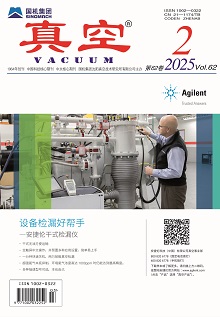|
|
Research Progress on Ferroelectric Properties of Hafnium Oxide Doped Thin Films
WU Li-ying, LIU Dan, FU Xue-cheng, CHENG Xiu-lan
VACUUM
2024, 61 (1):
10-20.
DOI: 10.13385/j.cnki.vacuum.2024.01.02
Most studies on ferroelectric thin films are focused on perovskite structural materials. However, these traditional ferroelectric materials have a variety of problems, such as poor compatibility with Si, environmental pollution caused by Pb, large physical thickness, low resistance, and small band gap. Different dopants such as Si, Zr, Al, Y, Gd, Sr and La can induce ferroelectric or antiferroelectric properties in HfO2 films, resulting in residual polari stion up to 45 µC·cm-2 and coercivity (1~2 MV·cm-1) approximately one order of magnitude greater than that of conventional ferroelectric films. At the same time, the thickness of HfO2 films can be very thin (below 10 nm) and the band gap is large (~ 5 eV). These advantages over traditional ferroelectric materials can overcome the obstacles of traditional ferroelectric materials including ferroelectric field effect transistors and 3D capacitors in thin film memory applications. In addition, the electrical and thermal coupling of antiferroelectric films holds promise for a variety of applications, such as energy harvesting/storage, solid state cooling, and infrared sensors. HfO2 doped thin films can be deposited by different deposition techniques, such as ALD, sputtering and CSD, and ALD has more obvious advantages in film deposition. In this paper, the recent progress of ferroelectric and antiferroelectric properties in HfO2 doped thin films is reviewed. The effects of different doping elements, film thickness, grain size, electrode, annealing, and stress on the ferroelectric properties of HfO2 thin films are described in detail.
Reference |
Related Articles |
Metrics
|
|

